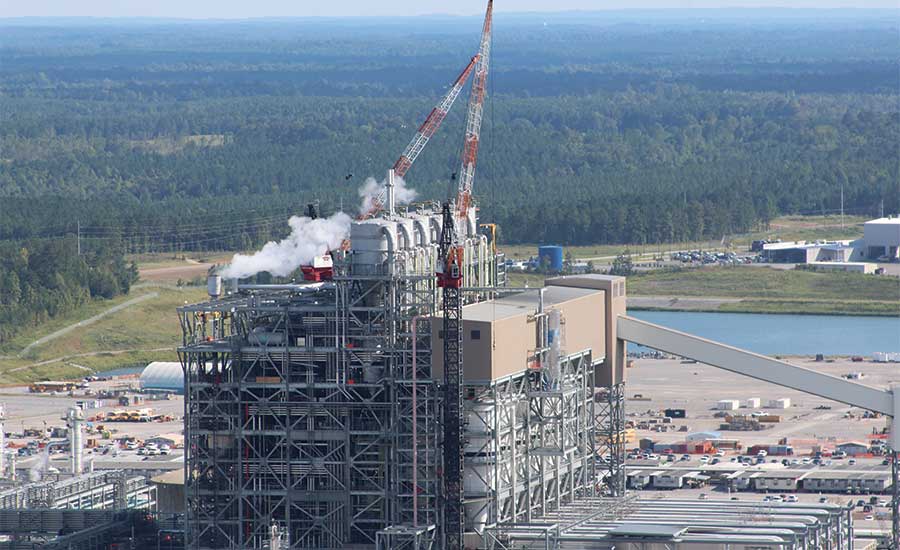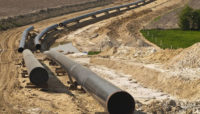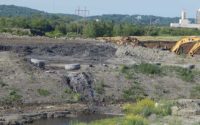The Trump administration’s crusade for coal-based energy was dealt two setbacks during President Donald Trump’s “Energy Week” in late June. Mississippi Power suspended commercial startup of a “clean coal” lignite gasification and carbon-capture combined-cycle generating project in Kemper County, Miss., whose costs exceed $7 billion. Also, a U.S. federal appellate court in Virginia on June 29 overruled a lower court order for the U.S. Environmental Protection Agency to analyze how its regulations have affected coal-industry jobs.
Trump said on June 29 that the U.S. has a 250-year resource of “big beautiful coal,” but industry jobs have dwindled in past years from automation and low natural-gas prices. Those prices also are a key factor in the Kemper decision. In February, Mississippi Power said an updated market analysis shows that a drop in projected long-term natural gas prices of 25% to 30% have had a negative effect on the project’s economic viability.
“Natural-gas fracking has changed the entire energy landscape,” says Paul Patterson, an analyst at Glenrock Associates. Kemper was planned when natural gas prices were high, but was built as fracking produced large mounts of gas and falling prices. Project development began in 2006, a year after Hurricane Katrina sent gas prices soaring. Construction started in 2010.
Mississippi Power and its parent, Southern Co., said on June 28 that their decision to immediately suspend gasifier start-up and operations is appropriate to manage costs and address the state Public Service Commission’s plan to relicense the plant only to burn natural gas. The commission said on June 21 that a settlement between the power firm and regulatory staff would remove the risk and keep power rates flat or lower. The commission will rule on Kemper’s future on July 6.
Mississippi Power applied for permission to build the 582-MW plant with the intent that it primarily burn synthesis gas converted from lignite using technology developed by Southern, KBR and the U.S. Energy Dept. The plant, originally set to cost $2.2 billion with a commercial operations date of November 2013, would be able to capture and sequester 50% of its carbon dioxide emissions. These would be piped to depleted oil fields for enhanced recovery.
The now $7.5-billion project produced syngas and operated for 200 days on lignite, but it did not attain commercial operation, Mississippi Power says. The gas-fired plant began operating in 2014, but problems have occurred with its gasifier, not the carbon capture technology. The 6-MW thermal gasifier was scaled to 580 MW in one step, says John Thompson, director of the Clean Air Task Force’s fossil transition project. “That was an invitation for problems,” he says.
The project was complicated with other hindsight errors, says Thompson. Plant design was not complete at the start of construction, and cost overruns kept building, he says. Supporting equipment had scaling trouble, and syngas coolers had problems. Major changes had to be made to piping, including thickness, metallurgy, quantity and supporting structures, which drove up the cost. In the process of turning lignite to syngas, the lignite drops through the gasifier and partially oxidizes. The carbon dioxide is separated out and remaining syngas goes into the turbine. But there were problems with the syngas cooler, says Thompson, adding, “We are disappointed it didn’t work.”
Meanwhile, the vacated lower court ruling that had ordered the coal industry regulatory analysis was prompted by a suit filed by Murray Energy. It was set to include economic impacts of reduced jobs and plant closings. But the ruling was based improperly on the Clean Air Act, says Ann Weeks, legal director for the Clean Energy Task Force, of the appellate court’s legal argument. “This was a win for the rule of law,” she says. The ruling came just days before EPA’s deadline to submit the analysis. Murray Energy is set to appeal, Gary Broadbent, its senior corporate counsel, told ENR on July 3.






Post a comment to this article
Report Abusive Comment